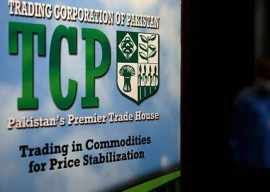
Fitch Ratings has affirmed Pakistan’s long-term foreign currency issuer default rating (IDR) at ‘CCC’, indicating that there is a possibility of foreign debt default but the probability is not yet strong.
The global ratings agency affirmed the rating after the International Monetary Fund (IMF) completed its first review under the $3 billion loan programme for Pakistan. The Fund’s executive board is set to meet on January 11 to give its nod for the release of second loan tranche of $700 million, which will unlock another $1.5-2 billion in financing from other global creditors.
Fitch elaborated that the ‘CCC’ rating reflects high external funding risks amid high medium-term financing requirements, despite some stabilisation and Pakistan’s strong performance on its current standby arrangement (SBA) with the IMF.
“We expect elections to take place as scheduled in February and a follow-up IMF programme to be negotiated quickly after the SBA finishes in March 2024, but there is still the risk of delays and uncertainty around Pakistan’s ability to do this,” it said.
“The elections could endanger the durability of recent reforms and leave room for renewed political volatility.”
The country may face a downgrade in rating in case IMF delays disbursements, “or indications that the authorities are considering debt restructuring.”
The agency said it would upgrade the rating on “greater certainty on the continued availability of funding over the medium term, for example, in the context of a longer-term IMF programme.”
Pakistan’s low rating has forced the current caretaker government to put on hold plans to raise financing in global financial markets. Global liquidity is already tight with a high interest rate environment and the country’s low credit rating will encourage investors to demand exorbitant rates of return on new debt.
“The government’s funding target includes $1.5 billion in Eurobond/ Sukuk issuance and $4.5 billion in commercial bank borrowing, which will likely prove challenging,” Fitch said.
“We expect (IMF executive) board approval of the recent SLA (staff-level agreement) to be unproblematic. The successful programme review reflects continued fiscal consolidation, energy price reforms in the face of a public backlash, and moves towards a more market-determined exchange rate regime,” Fitch said.
The IMF disbursed $1.2 billion in July and $700 million will follow after approval of the SLA, leaving $1.1 billion to be disbursed after a review scheduled in March 2024.
Saudi Arabia provided $2 billion in new deposits and the UAE gave $1 billion. The government also received over $500 million in project and commodity financing in the first quarter of the current fiscal year.
Read IMF sees $8b dip in debt in two years
“A further $1.1 billion in programme loans and over $500 million in project loans appear likely in the remainder of 2023.”
Authorities expect total gross external financing of $18 billion in FY24, against nearly $9 billion in government debt maturities. The maturing debt includes a $1 billion bond due in April and payment of $3.8 billion to multilateral creditors, but excludes routine rollovers of bilateral deposits.
At the end of September, maturities in the remaining three quarters of FY24 were just over $7 billion.
Pakistan’s forex reserves have recovered on inflows of new funding and limited CAD (current account deficit), “and we expect further increases.”
Official gross reserves, including gold, were $12.7 billion in October 2023 (about three months of imports), up from about $8 billion at the start of 2023, but well below the peak of $23 billion at the end of 2021.
The central bank’s net liquid forex reserves have been hovering at just over $7 billion since October 2023 (about two months of imports), from a low of about $3 billion in January.
“We forecast a current account deficit of about $2 billion (below 1% of GDP) in FY24, in line with FY23.”
Many of Pakistan’s policy commitments under the SBA had been frontloaded, but the caretaker government has also taken new measures, including sharp hikes to natural gas and electricity prices and a crackdown on the black market, helping narrow the gap between the parallel (kerb) and inter-bank exchange rates and bringing more forex into the banking system.
Parties across the political spectrum have an extensive record of failing to implement or reversing reforms agreed with the IMF. “We see a risk that the current consensus within Pakistan on the measures necessary to ensure continued funding could dissipate quickly once economic and external conditions improve, although Pakistan now has fewer financing options than in the past.
“Any follow-up IMF programme would likely require Pakistan to undertake sweeping structural reforms in opposition to entrenched vested interests.”
Published in The Express Tribune, December 14th, 2023.
Like Business on Facebook, follow @TribuneBiz on Twitter to stay informed and join in the conversation.
1729662874-0/One-Direction-(1)1729662874-0-405x300.webp)


1722421515-0/BeFunky-collage-(19)1722421515-0-165x106.webp)




1732084432-0/Untitled-design-(63)1732084432-0-270x192.webp)











COMMENTS
Comments are moderated and generally will be posted if they are on-topic and not abusive.
For more information, please see our Comments FAQ